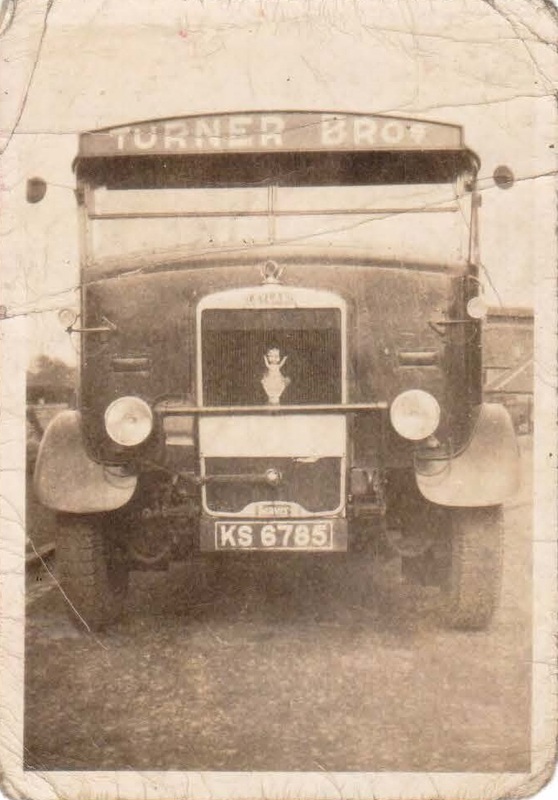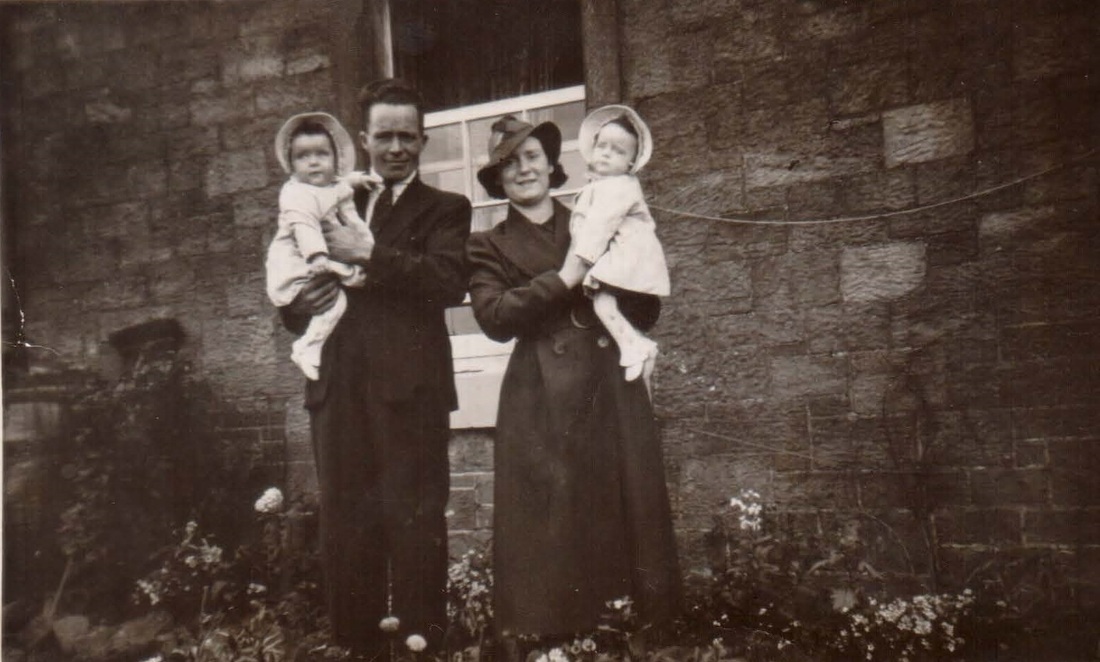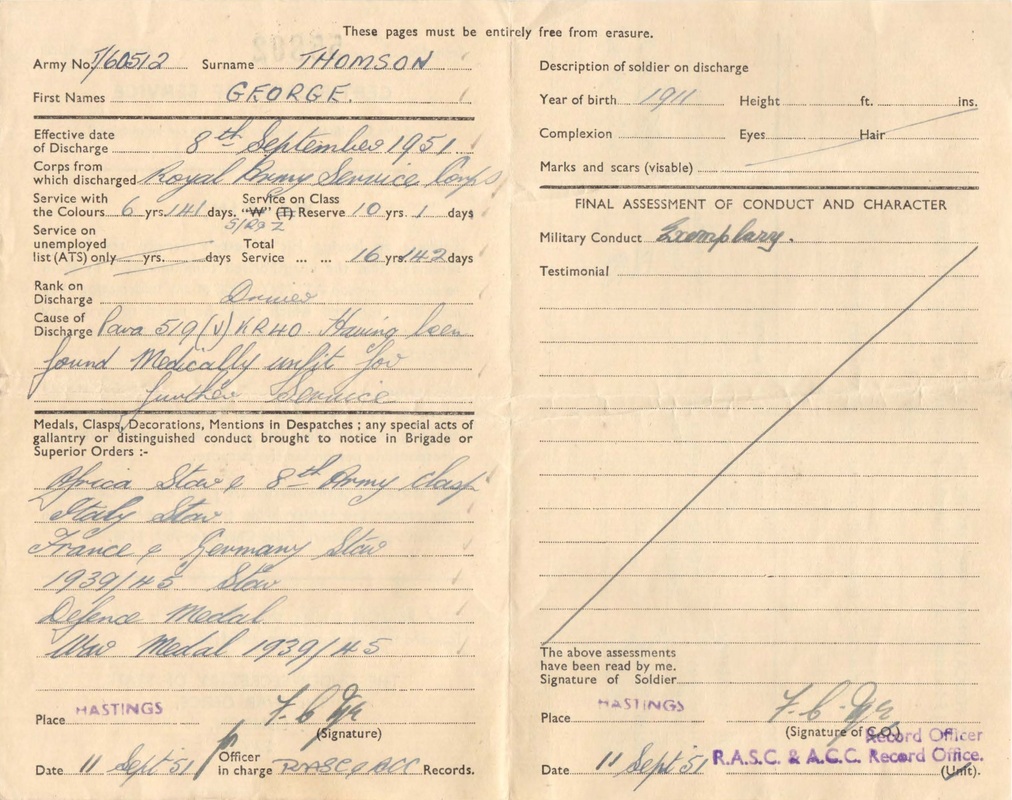introductionLife is full of random events, which happen sometimes not by chance as we would believe, but are down to fate lending a hand. One such event occurred earlier this week as I was working on the article for my March blog. It came in the form of my friend and colleague Jen Brown clutching a small Tupperware type box which I initially believed to contain a tasty selection of biscuits. Firmly believing this to be the case we adjourned to the kitchen in the hope that Jen would share the “goodies” over a cup of coffee. (I am currently trying to shed a few pounds, so anything that poses as a tasty treat makes my mouth water just thinking about it!) When the little box finally opened the “goodies” inside were a treat indeed! Being laid out before me was a snapshot in time, like a vivid view from a rear window as it slowly recedes from sight. Medals, WW2 medals to be exact, and papers belonging to Jen’s grandfather George Thomson telling of his personal journey from 1939 to 1945, his six and half years’ service under “colours” to his final discharge from the Army in 1951. Recognising George’s Africa Star with 8th Army Clasp and Italy Star from previous research any thoughts regarding my current “work in progress” were immediately shelved. Other medals I had not previously encountered had me intrigued and as Jen recounted what she knew of her family’s story it was apparent that the time had come for it to be told. George ThomsonHe was born on the 14th May 1911, yards from the Scottish Border at Carham. He and his siblings were the first generation to be born on the “wrong” side of the Border in every direct ancestral line we have followed back to at least the mid-18th Century. A true “Borderer”, George was the fourth son of nine children born to James Thomson a blacksmith and his wife Euphemia Hope. The family “did’na bide” long on foreign soil though and shortly after WW1 the family moved the five miles South West to the farm of Lempitlaw, near Sprouston in Roxburghshire. Following a typical rural upbringing and education at the local school George became a long distance lorry driver. He met the love of his life Jean Isabella Pringle Donaldson through his brother Irvine (Alec) whose girlfriend and later wife, was in domestic service with Jean at Lochside in nearby Yetholm. The couple married at Fountainbridge Church, Edinburgh on 12th February 1937, from the home of Jean’s parents Robert and Jane Donaldson (nee Pringle) of 5 Upper Grove Place. They set up home together nearby at No 16 Dundee Street where later that same year George and Jean were blessed by the arrival of twin daughters they named Sylvia Hope and Sheila Pringle Thomson. In the 1930’s Europe was in throws of a deep economic depression giving rise to totalitarian movements that were threatening world peace. Life was tough enough without the loss of family and loved ones. George was no newcomer to this having already outlived three of his brothers. Twins John and James H died when he himself was a mere toddler, his older brother Thomas died in 1925 aged just 18 years old. Now it was the turn of his father who succumbed to prostate cancer in August 1937 aged 57, but worse was still to come. In January of 1939 his baby daughter Sylvia died at home in Dundee Street of acute primary pneumonia at a little over a year old. Neither Jen nor the family are in possession of George’s military service records, which are still held by the MOD and subject to the data protection act. Until the application for their release is approved we have done our detective best, but have relied heavily on the verbal history as told by George himself to his daughter Sheila and his two granddaughters. Wherever possible we have backed this up with the material evidence currently in the family’s possession. George's Army careerIt seems a little odd to begin at the end of a career, rather than at the beginning but in this case it is almost a necessity. His Certificate of Service records a total of 16 years and 142 days, 6 years and 141 days service “with colours” and 10 years 1 day service on Class S/R9Z. His “Effective date of Discharge” is the 8th September 1951 from the Royal Army Service Corps. This would indicate that George’s association with the army as a reserve or possibly Territorials began in 1935. When war with Germany was declared in September 1939, George’s previous army service combined with his civilian knowledge of heavy goods vehicles were in high demand. He was enlisted as a driver in the transport division of the Royal Army Service Corps, (RASC), currently known as the Royal Logistics Corps. The part of his life that would be recorded for posterity under the service number T/60512 was about to commence. A bronze medal inscribed with his name and service number bearing the lettering “XXX Corps” and “Alamein to Cuxhaven” to the front and “Normandy, Mount Pincon, Crossing of the Seine, Brussels and Antwerp , The Advance to Arnhem, The Ardennes, The Reichswald, Crossing of the Rhine, Final Advance into Germany” to the rear was another clue. It would imply that Private George Thomson had seen active service from at least the Battle of El Alamein in 1942 to the final advance into Germany in 1945 and that he had been present at the Normandy landings the previous year. George in africa
To discover what life was like for a transport driver during this period I referred to the personal accounts published on the BBC History War Stories website, in particular that of Henry Rock, a driver and sergeant in the RASC Transport Division. His full account can be read here: - http://www.bbc.co.uk/history/ww2peopleswar/stories/54/a2336654.shtml “…- Carried rifle with bayonet and a revolver. Referring back to the Service Card of Pte George Thomson above, two entries under “Trade Qualifications” are of particular interest. From letters written from Egypt by a relative of mine in the 7th Armoured Division (8th Army) I learned about the establishment of the Royal Army Service Corps training school in Egypt in 1942/43. The first entry on George’s Service Card dated 25th June 1943 I feel sure would have been in Egypt under Chief Instructor (then) Captain Darlow, as even if he was mobilised with XXX Corps and the 8th Army in the invasion of Sicily he would not have left Egypt until the 10th July 1943. The establishment where he completed his second period of training dated on the 27th October 1943 is more difficult to determine as these details are omitted from both records. (An interesting side note here is that Jen remembers her grandfather telling her he was in Egypt twice, why was that? was the second qualification also gained there? He also told her that at one point he drove a minesweeper tank. There are accounts of minesweeping tanks heading transport columns in the desert in 1942 where the dust being kicked up made it necessary for the drivers of the following trucks to wear gas masks, but was George one of them?). The above photograph was taken from an interview "I Drove a Desert Dinosaur" by R A Richardson who tells the story of his personal experience of the RASC Tank Transporter Units. Who can tell, maybe he knew George? Full text here http://ww2talk.com/forums/topic/13842-rasc-transporter-company/ The North Africa campaign was long, arduous and incurred heavy allied losses of both men and machinery. By the time victory was finally secured with the surrender of the Axis forces in May 1943 the 8th Army was the pride of Britain “Just one more action” Monty told them and then you will be going home. The “action” was to be Italy. The Thomson’s War in Europe Italy
For the Thomson family the war in Italy will always be remembered for the loss of George’s younger brother James Weddell Thomson, of the 6th Battalion, The Gordon Highlanders who together with his commanding officer, was shot by a German sniper at Anzio, on the 3rd of April 1944. He had been amongst the invasion force known as “Operation Shingle” that had landed with the 2nd Infantry Division at “Peter Beach” on 22nd January earlier in the same year. He was 29 years old and left a wife Isabella. France & 21st Army Group On their return to Britain, George and his Company of the RASC within XXX Corps became part of the 21st Army Group. The 21st Army Group had been formed in 1943 and in 1944:- “it was assigned to Operation Overlord, the Western Allied invasion of Europe, and was an important Allied force in the European Theatre. The 21st Army Group operated in Northern France, Luxembourg, Belgium, the Netherlands and Germany from June 1944 until the end of the war in Europe in 1945, after which it was redesignated the British Army of the Rhine (BAOR)….. Commanded by General (later Field Marshal) Sir Bernard Montgomery, 21st Army Group initially controlled all ground forces in Operation Overlord…..”
VE Day and The Return Home The end of the war often meant a long and agonising wait for demobilisation and repatriation. It was organised on the basis of age and length of service. This was a time for reflection, a time to plan reunions with loved ones, and a time to plan for the future with real optimism. Amongst George’s wartime belongings that he kept safe throughout his remaining lifetime was his letter pouch or wallet. It contained a copy of the poem “Auld Reekie”, a photograph of his wife Jean and daughter Sheila, and another poem in a letter which he had written, it is believed, in anticipation of his return home.
On demobilisation George returned to his home in Dundee Street, Edinburgh to find it empty. His wife’s possessions had been cleared and of Sheila there was no sign. He then learnt the awful truth that his beloved wife Jean had died of "Epilepticus Broncho Pneumonia", an awful condition with seizures and fits caused by swelling to brain, at her parent’s home on the 21st September 1943. Following her mother’s death Sheila aged 6 years old, was hastily removed to her widowed paternal Grandmother at the farm of Lempitlaw. George returned to his civilian life and his beloved lorries. He remained with Army Reserves for a further six years but was not a well man. An old shrapnel wound proved troublesome and necessitated frequent visits to hospital in Glasgow to drain his chest which led to the eventual removal of the majority of his left lung in 1951. This signalled the end of George’s army career and he was discharged from the Army on 8th September 1951 on the ground of “Having been found medically unfit for further service”.
George never remarried and spent the majority of his post war life in Edinburgh. In his latter years he returned to his home in the Borders, where he was cared for by his daughter, now married with a grown up family of her own. George passed away on 2.1.1991 at the age of 79. His is buried in the churchyard at Sprouston alongside other members of his family.
Links & Sources of INFoForces War Records https://www.forces-war-records.co.uk/medals/
The Pegasus Archive http://www.pegasusarchive.org/arnhem/order_xxx.htm WW2Talk http://ww2talk.com/forums/topic/13842-rasc-transporter-company/ There is a particular set of records deposited at the Liddell Hart Centre for Military Archives, Kings College London that I would love to read. They are the papers belonging to the late Brigadier Eric William Townsend Darlow, who was also heavily involved with the training school and was inextricably linked with the RASC and the Army transport column throughout the duration of the war. http://www.aim25.ac.uk/cgi-bin/vcdf/detail?coll_id=405&inst_id=21
7 Comments
|
AuthorSusie Douglas Archives
August 2022
Categories |
Copyright © 2013 Borders Ancestry
Borders Ancestry is registered with the Information Commissioner's Office No ZA226102 https://ico.org.uk. Read our Privacy Policy

























